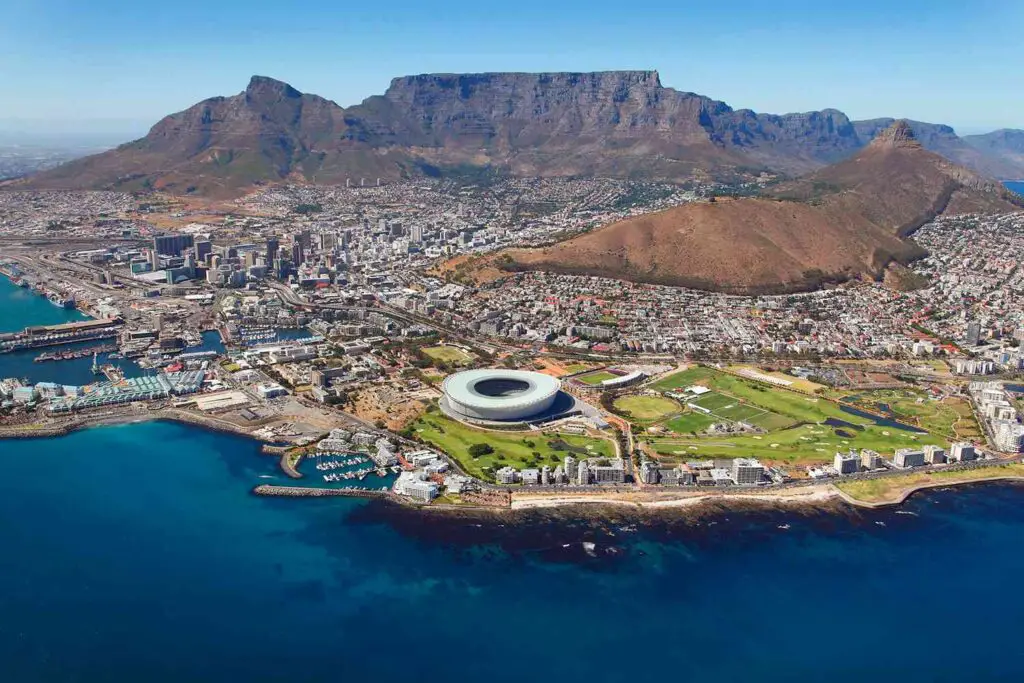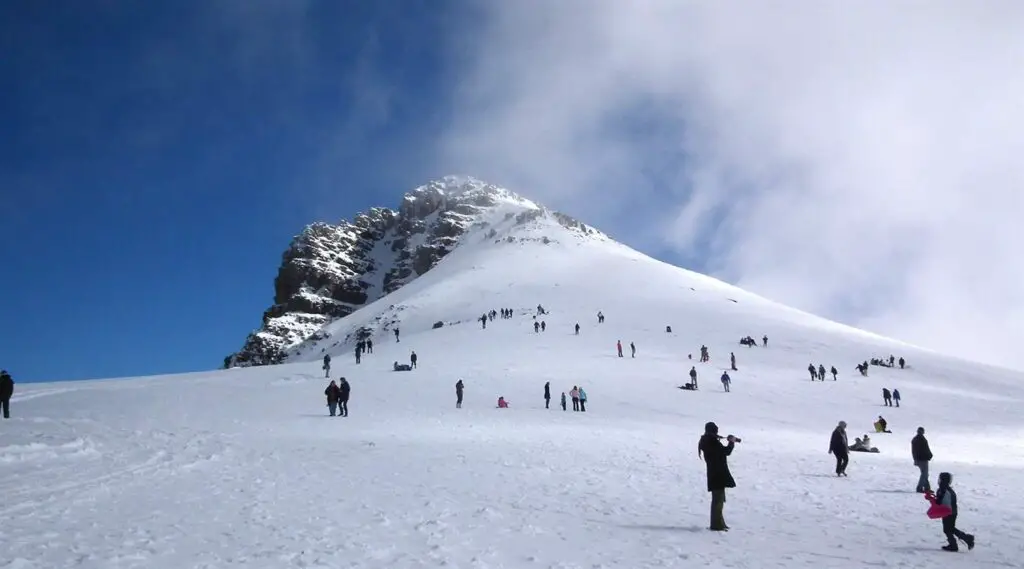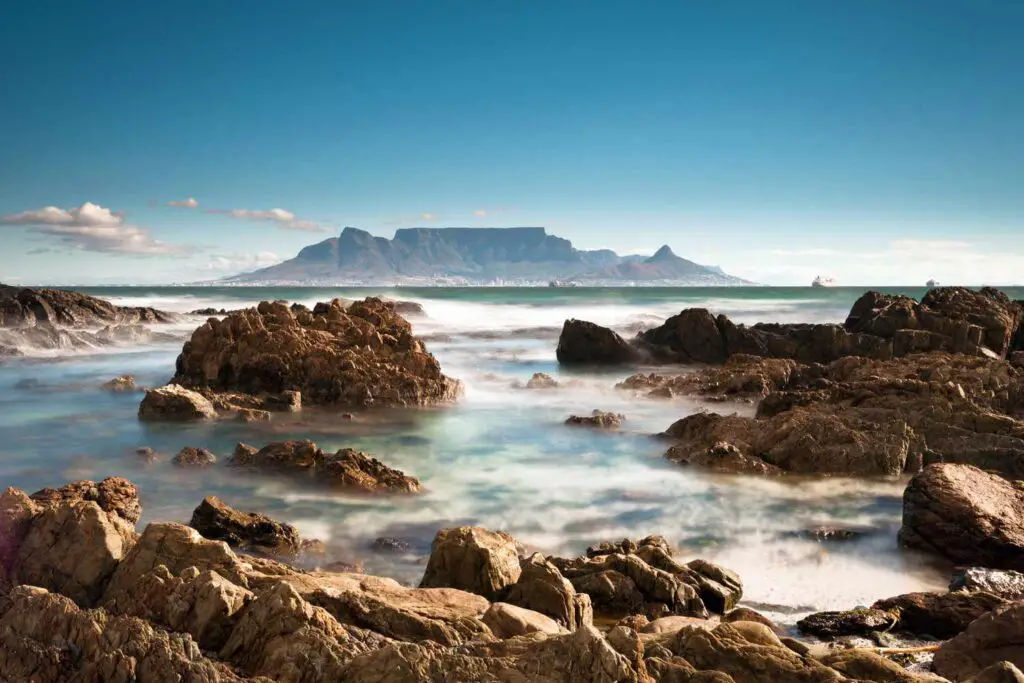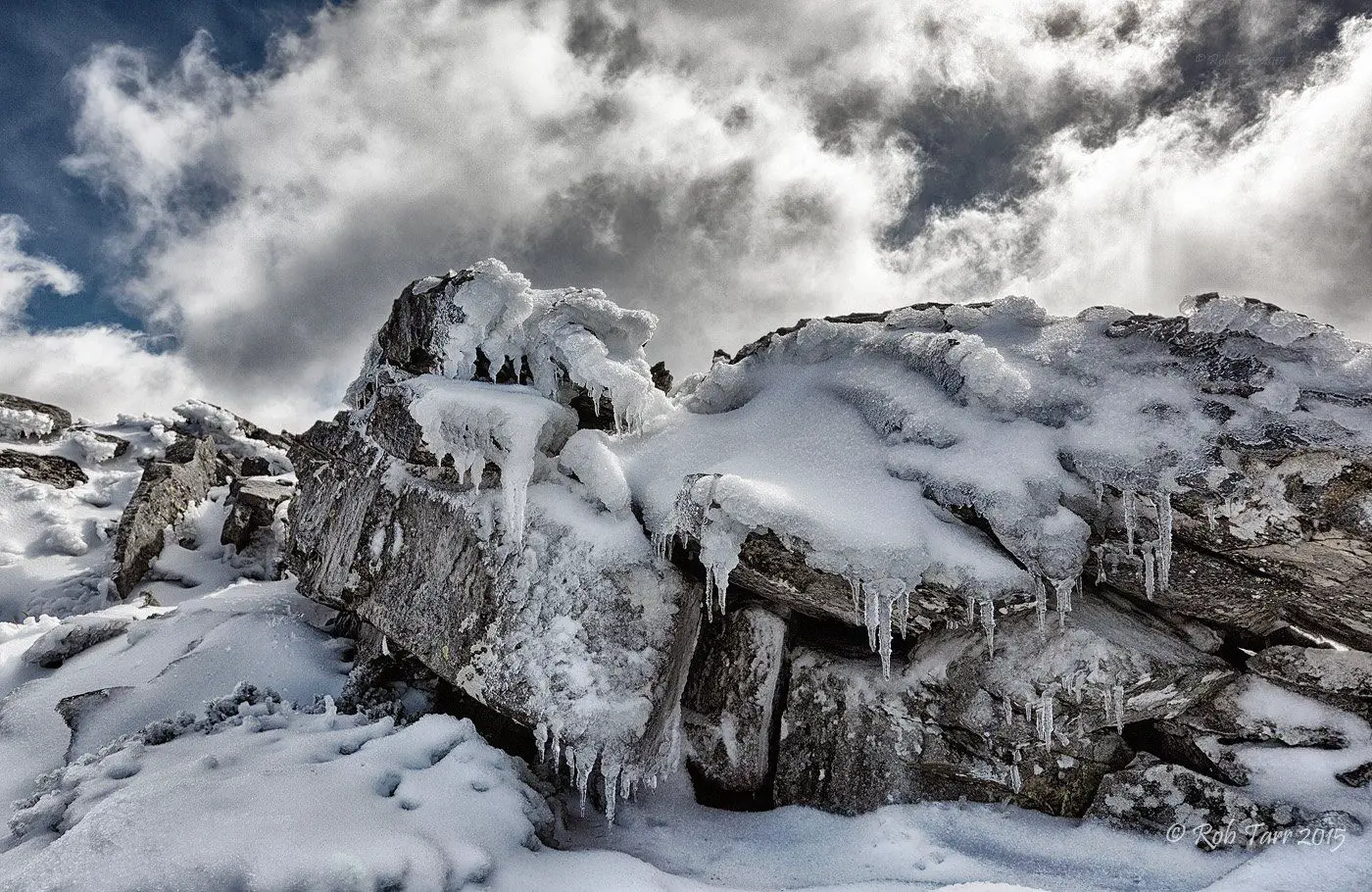Have you ever wondered if it snows in South Africa? For many, this may seem like an odd question, but the truth is that snowfall does occasionally occur in certain parts of the country. In this blog post, we’ll answer the question “Does it snow in South Africa?”Then consider which regions of the nation might have a few snowflakes throughout the winter. So, read on to find out more about snow in South Africa.
The Different Climates in South Africa
South Africa is a country of diverse climates. The climate can vary widely across the country and each region has its own unique environment. There are six main climate zones in South Africa: temperate, subtropical, semi-arid, arid, highland and tropical.
The temperate zone is located along the coast and includes areas such as Cape Town and Port Elizabeth. This area has mild winters and hot summers with plenty of rain. The average temperature ranges from around 10°C (50°F) in winter to around 25°C (77°F) in summer.
The subtropical zone is located in the north of the country and includes areas such as Limpopo and Mpumalanga. This region has hot summers and cold winters with frequent thunderstorms in the summer months. The average temperature in this zone ranges from around 16°C (60°F) in winter to around 30°C (86°F) in summer.

The semi-arid zone is located in the interior of the country and includes areas such as the Karoo and Kalahari Deserts. This region has hot, dry summers and mild winters with very little rain. The average temperature ranges from around 10°C (50°F) in winter to around 30°C (86°F) in summer.
The arid zone is located in the northern part of the country and includes areas such as the Namib Desert and parts of the Kalahari Desert. This region has extremely hot summers and cool winters with very little rainfall. The average temperature in this zone ranges from around 15°C (59°F) in winter to around 35°C (95°F) in summer.
The highland zone is located in the western part of the country and includes areas such as the Drakensberg Mountains. This region has cool summers and cold winters with frequent snowfall in the higher altitudes. The average temperature ranges from around 0°C (32°F) in winter to around 15°C (59°F) in summer.
Finally, the tropical zone is located in the northeast of the country and includes areas such as KwaZulu-Natal. This region has hot, humid summers and mild winters with plenty of rain. The average temperature in this zone ranges from around 20°C (68°F) in winter to around 30°C (86°F) in summer.
Snowfall in South Africa
South Africa may be known for its warm climate, but it is possible to experience snowfall in certain parts of the country. In general, snowfall only occurs in the mountains of South Africa in winter months, usually from June to August. Some of the most popular places to find snow in South Africa include Drakensberg in KwaZulu-Natal and the Cedarberg Mountains in the Western Cape.
Snowfall is rare but not unheard of in other parts of South Africa. Areas such as Johannesburg and Pretoria may experience a light dusting of snow, which is known as a “light snow event”. During these events, temperatures drop low enough for snow to form. The most recent example of this occurred in 2018 when parts of Johannesburg were covered in a layer of snow.
In general, snowfall in South Africa is unpredictable and can happen at any time. It is also important to note that most areas that experience snow are higher elevations, so it can be difficult to access these areas. However, if you are willing to make the effort, you can experience the beauty of a snowy South African landscape!
The Best Places to See Snow in South Africa

Snow in South Africa is a rare but beautiful sight. While the snowfall is usually only temporary and melts quickly, there are still a few places that may offer you a glimpse of this wintery wonderland.
The most popular spot to view snow in South Africa is the Matroosberg Reserve in the Western Cape. During the winter months, visitors may get the chance to witness some spectacular snow-covered peaks. The nearby town of Ceres also receives occasional snow, with the peaks of the Saronsberg Mountains often receiving a light dusting.
Travellers can also visit Tiffindell Ski Resort in the Eastern Cape, which is one of the few places in South Africa where skiing is possible. The resort offers ski runs ranging from beginner to advanced, as well as snowboarding and other winter activities.
For those looking for a more adventurous experience, Lesotho is another great option for snow seekers. With an altitude of 3000m, it is much cooler than its surrounding areas and offers a range of winter activities such as skiing and snowmobiling.
No matter where you go, a trip to South Africa during winter is sure to be a memorable experience. Even if you don’t see any snow, you’ll still have plenty of opportunities to explore the country’s diverse wildlife and vibrant culture. So bundle up and get ready for some snow fun!
When is the Best Time to Visit South Africa for Snow?

The best time to visit South Africa if you’re hoping to experience snow is between June and August, when temperatures are at their lowest. This period coincides with the winter months in South Africa, which generally runs from May through September. During this time, snowfall is possible in certain regions of the country, particularly in the higher mountain areas of the Western Cape, Eastern Cape, KwaZulu-Natal, and Lesotho.
While the likelihood of seeing snow is greater during the winter months, it is not guaranteed. It is important to remember that snowfall in South Africa is very rare and localized. Even if there is snow in one area, it doesn’t necessarily mean that it will fall in another region.
To increase your chances of seeing snow in South Africa, your best bet is to head to the higher mountain areas, such as the Drakensberg Mountains or Mount Everest. These regions offer some of the best skiing opportunities in the country. There are several ski resorts in these regions, where you can enjoy skiing and snowboarding activities.
You may also want to consider visiting the Lesotho Highlands, which are located near the Eastern Cape. Lesotho is an independent country located entirely within South Africa and offers some of the highest altitudes in the region. Here, you can find some of the most stunning landscapes, as well as excellent ski resorts.
No matter when you decide to visit South Africa, make sure to bring warm clothing and plenty of layers. Snowfall can happen at any time and it’s important to be prepared. Whether you’re hoping to experience a white Christmas or just take in the beautiful winter scenery, South Africa has something for everyone.
South Africa in Month of June
South Africa in Month of July
South Africa in Month of August
August is one of the colder months in South Africa, and the snowfall is most likely to occur during this month. August temperatures vary by region, but generally, the higher you go, the colder it will be. The mountains can often be snow-capped during this time of year, and there are even ski resorts located in the Eastern Cape province.
Snowfall can occur in any region of South Africa during this month, but it is most likely to happen in the mountainous areas of the Eastern Cape and the Western Cape. Snowfall in these regions can range from light snowfalls to heavy snowfalls that blanket the area. The highest chances of getting snow in South Africa occur in the higher elevations of Lesotho, where temperatures drop as low as -7 degrees Celsius.
In addition to the chance of snowfall in these regions, August also brings chilly temperatures and rain to most parts of the country. The average temperature in August ranges from 15-20 degrees Celsius and rainfall averages around 80mm throughout the month.
August is a great time to visit South Africa if you are looking to experience a winter wonderland. If you plan to head up into the mountains, make sure to bring warm clothes and plan accordingly. Keep in mind that roads can become icy, and snowfall can cause traffic delays and closure of mountain roads, so it’s best to check the weather before your trip.
Final Words
South Africa is a beautiful country and has a variety of climates to offer, from the deserts of the Karoo to the snowy mountains of the Drakensberg. While South Africa does experience some snowfall each year, it is not a regular occurrence. If you are hoping to catch a glimpse of snow in South Africa, then it is best to plan your trip around the months of June through August when snowfall is more likely. No matter when you visit South Africa, there will be plenty of interesting sights and activities to enjoy!
Frequently Asked Questions
What is the highest mountain peak in South Africa?
At 3,482 meters (11,424 feet) above sea level, Mount Kilimanjaro is the highest mountain peak in South Africa. Located on the border between Tanzania and Kenya, this dormant volcano is one of the most recognizable peaks in the world. It stands as the highest mountain in Africa and is the tallest free-standing mountain in the world. It’s also home to some of the most unique ecosystems in the world, featuring forests, grasslands, and even glaciers near its summit. Trekking to the summit of Mount Kilimanjaro is an iconic experience, and it’s definitely an adventure you won’t soon forget!
Does it ever snow on Table Mountain?
Table Mountain is one of South Africa’s most iconic landmarks, and while it is not known for having a lot of snow, it does get its fair share. In fact, the peak of Table Mountain receives an average of 1-2 meters of snowfall each year. Snow on Table Mountain is usually seen between May and August, although it can happen at any time of the year.
It is possible to ski on Table Mountain in the winter months, but the conditions are not ideal for skiing due to the terrain and the lack of lifts. Instead, many people enjoy snowshoeing or cross-country skiing. Snowshoeing is a great way to explore the mountain and its surroundings, as you can make your own tracks in the snow.
The best time to experience snow on Table Mountain is usually between mid-July and mid-August. The snow usually sticks around until September, although it can vary from year to year. While the conditions are often wet and slushy, it can also be extremely cold and windy during this time. It is important to dress appropriately and be prepared for extreme weather conditions when planning to spend time on the mountain in the winter.
Which ski resort is the closest to Johannesburg?
If you’re looking for a ski resort close to Johannesburg, look no further than Tiffindell Ski Resort. Located in the Eastern Cape Province of South Africa, it is the only ski resort in the country. With five ski runs of varying difficulty and a total skiable area of 25 hectares, Tiffindell is the perfect spot for skiing or snowboarding near Johannesburg. The resort also features two chairlifts and an area specifically dedicated to beginner and intermediate skiers.
The closest ski town to Johannesburg is Clarens, located just over 2 hours away. Clarens has several hotels, restaurants, and shops, as well as ski hire and instruction available. It’s also a popular winter destination, with plenty of activities and sights to explore. Clarens also has an annual Snow Festival that takes place every June, featuring a host of winter sports, live music and entertainment, and much more.
If you’re looking for a ski destination close to Johannesburg, Tiffindell Ski Resort and Clarens are your best bets. Whether you’re a beginner or an experienced skier, these two resorts offer everything you need for a great day on the slopes.
How many ski resorts are there in South Africa?
There are currently five ski resorts in South Africa: Tiffindell Ski Resort, Afriski Mountain Resort, Matroosberg Private Nature Reserve, Snow Report South Africa, and the South African Ski Boat Club. Tiffindell is the largest and most popular of the resorts, located in the Eastern Cape on the slopes of the highest peak in South Africa, Ben McDhui. Afriski is located in the Lesotho mountains and offers both skiing and snowboarding. Matroosberg Private Nature Reserve, near Ceres, is a great spot for day trips or weekend getaways. Snow Report South Africa is a great resource for finding all the latest snow conditions across the country. The South African Ski Boat Club is a great resource for those looking to ski in the Western Cape.
No matter which resort you choose, you’ll be sure to find plenty of fun activities to do while enjoying your time in the mountains. Whether you prefer to ski, snowboard, take a guided hike, or just relax in the beautiful scenery, you’ll be sure to find something that suits your needs. So grab your winter gear and head out to one of the many ski resorts in South Africa!
What is the best time to go skiing in South Africa?
The best time to go skiing in South Africa is from June to September. These months experience the most snowfall and offer the best piste conditions. Winter in South Africa is milder than other countries, but still offers plenty of opportunity for skiing. The ski season usually starts in June and can run until October, depending on snowfall.
If you’re looking for a longer ski season, look for resorts that are located at higher elevations. The higher altitude resorts have more snow cover and better piste conditions. It is also important to remember that the winter months of July and August are the coldest months in South Africa, so if you don’t like extreme cold weather, plan your trip accordingly.
South Africa also has some great summer skiing options available. During late spring and early summer, some resorts offer dry ski slope skiing and snow tubing as alternatives to traditional downhill skiing. This is a great option if you’re looking to get a taste of skiing without the extreme temperatures of winter.
No matter when you decide to ski in South Africa, be sure to prepare for the cold temperatures and pack all the necessary gear and equipment. And always remember to practice safety first when skiing or participating in any other snow sport.
Is there snowboarding in South Africa?
Yes, there is snowboarding in South Africa. In fact, the country boasts some of the best ski resorts in the world and many of them offer great opportunities for snowboarders. There are ski resorts located throughout South Africa and each one offers unique slopes, terrain, and facilities for snowboarders.
The most popular ski resorts for snowboarding in South Africa are Afriski Mountain Resort in Lesotho, Tiffindell Ski Resort in the Eastern Cape, and Matroosberg Reserve near Ceres. These resorts all offer plenty of varied terrain to challenge any level of rider and a great atmosphere for an unforgettable snowboarding experience. They also have a range of facilities such as terrain parks, halfpipes, and chairlifts.
When it comes to the equipment you need for snowboarding in South Africa, the same basics apply as for skiing. A good-quality snowboard with bindings, boots, and a helmet is essential. You may also want to bring some extra layers and gloves to keep you warm when the temperature drops.
If you’re planning to visit a ski resort in South Africa this winter, be sure to check out the options for snowboarding. With plenty of options for riders of all abilities and great facilities at each resort, you’re sure to find the perfect spot for a great snowboarding experience.
What kind of equipment do I need for skiing in South Africa?
When planning to ski in South Africa, it’s important to make sure you have the right equipment for the activity. Depending on what level of skiing you’re doing, your equipment needs will vary.
At a minimum, if you are a beginner skier, you should have a pair of quality skis, ski boots, and poles. If you are an advanced skier, you may also want to consider getting specialized equipment such as freestyle skis or off-piste skis. Additionally, it’s a good idea to make sure you have a helmet and protective eyewear to prevent injury or discomfort from the cold and sun glare.
It’s also important to ensure that you have the proper clothing for skiing in South Africa. You should always wear layers of clothing that are made from waterproof and breathable fabrics to keep you warm and dry. Additionally, make sure to bring gloves and a beanie to protect your hands and head from the cold temperatures.
Finally, if you are skiing at a resort in South Africa, you may need to rent additional equipment such as a lift ticket and ski racks. This is why it’s important to plan ahead and do your research before visiting a resort in South Africa.
What are the piste conditions like in South Africa?
When it comes to skiing in South Africa, piste conditions can vary greatly from region to region. Generally speaking, the higher the altitude, the better the snow quality and the more reliable the conditions. However, due to South Africa’s warm climate, the snow cover is not always consistent. In the high mountain regions of the Eastern Cape and KwaZulu-Natal, ski resorts such as Tiffindell and Tiffindell Ski Resort generally have the best snow cover throughout the winter months (May-August).
Piste conditions in South Africa tend to be heavily dependent on the weather. If a large snowfall occurs before the season starts, conditions can be excellent right away. But if snowfall is sparse during the ski season, conditions may become icy and slushy.
In some cases, resorts such as Afriski Mountain Resort in Lesotho may rely on artificial snowmaking systems to maintain good skiing conditions throughout the season. This is especially helpful during years with low snowfall.
In addition to piste conditions, safety should always be a priority when skiing in South Africa. Some slopes are quite steep and avalanche risk can be high in certain areas. Skiing off-piste in South Africa is not recommended unless you are accompanied by a qualified guide who knows how to assess potential danger.
Can I off-piste ski in South Africa?
Off-piste skiing, also known as backcountry skiing or ski touring, is a popular activity for adventurous skiers. South Africa does have off-piste skiing options, though they are limited due to the country’s relatively small ski resorts and lack of abundant snowfall.
The country’s top ski resorts, including Tiffindell Ski Resort in the Eastern Cape, are located in higher elevations with colder temperatures. As such, these areas offer some of the best off-piste skiing opportunities in the country. The terrain here is suitable for both beginner and intermediate off-piste skiers, but there is limited terrain available.
Most of South Africa’s ski resorts have dedicated guides and instructors who can take you out on a tour of the backcountry. These guides can provide advice and tips on the best routes and conditions to enjoy an unforgettable experience. However, it is important to remember that South Africa has very specific rules when it comes to off-piste skiing and avalanche awareness. Make sure to follow these rules at all times to ensure a safe and enjoyable ski experience.
For those wanting to experience off-piste skiing in South Africa, it’s best to plan ahead and book a guided tour. This will ensure that you get the most out of your time on the mountain and have the chance to discover some of South Africa’s hidden gems.
What are the avalanche risks in South Africa?
Avalanche risk is an ever-present concern when skiing or snowboarding in South Africa. Fortunately, the mountains of South Africa are not particularly prone to avalanches due to their lower altitudes. However, it is still important to be aware of the risk and to take the necessary precautions before heading out on the slopes.
When skiing or snowboarding in South Africa, it is important to check the snowpack and weather conditions prior to heading out on the slopes. It is also important to avoid skiing or snowboarding in areas with a lot of trees and rocks, as these can increase the risk of an avalanche. Be sure to stay away from large open bowls and avoid skiing or snowboarding below cornices and other high-elevation overhangs.
It is also important to carry an avalanche transceiver, probe, and shovel when skiing or snowboarding in South Africa. This equipment can help you locate anyone who may have been caught in an avalanche and can also provide vital information about the snowpack conditions.
Finally, be sure to heed all warnings about possible avalanche risks. Ski patrol will always do their best to keep the ski resorts safe, so it’s important to pay attention to their advice and take any necessary precautions if they indicate that there are increased risks in certain areas.
By understanding the risk of avalanche and taking the necessary precautions, you can help ensure that you have a safe and enjoyable ski experience in South Africa.
Read Related Articles
Does it Snow in Houston? You May Be Surprised!
Does it Snow in Tennessee? The Answer May Surprise You!
Does It Snow In South Africa? Find Out Here!
Does it snow in North Carolina
Does it Snow in Saudi Arabia? Snowflakes in the Arabian Desert
Does It Snow in Nashville? Yes, and Here’s Why You Should Visit This Winter
Does it Snow in Australia? You Really Get Surprised

